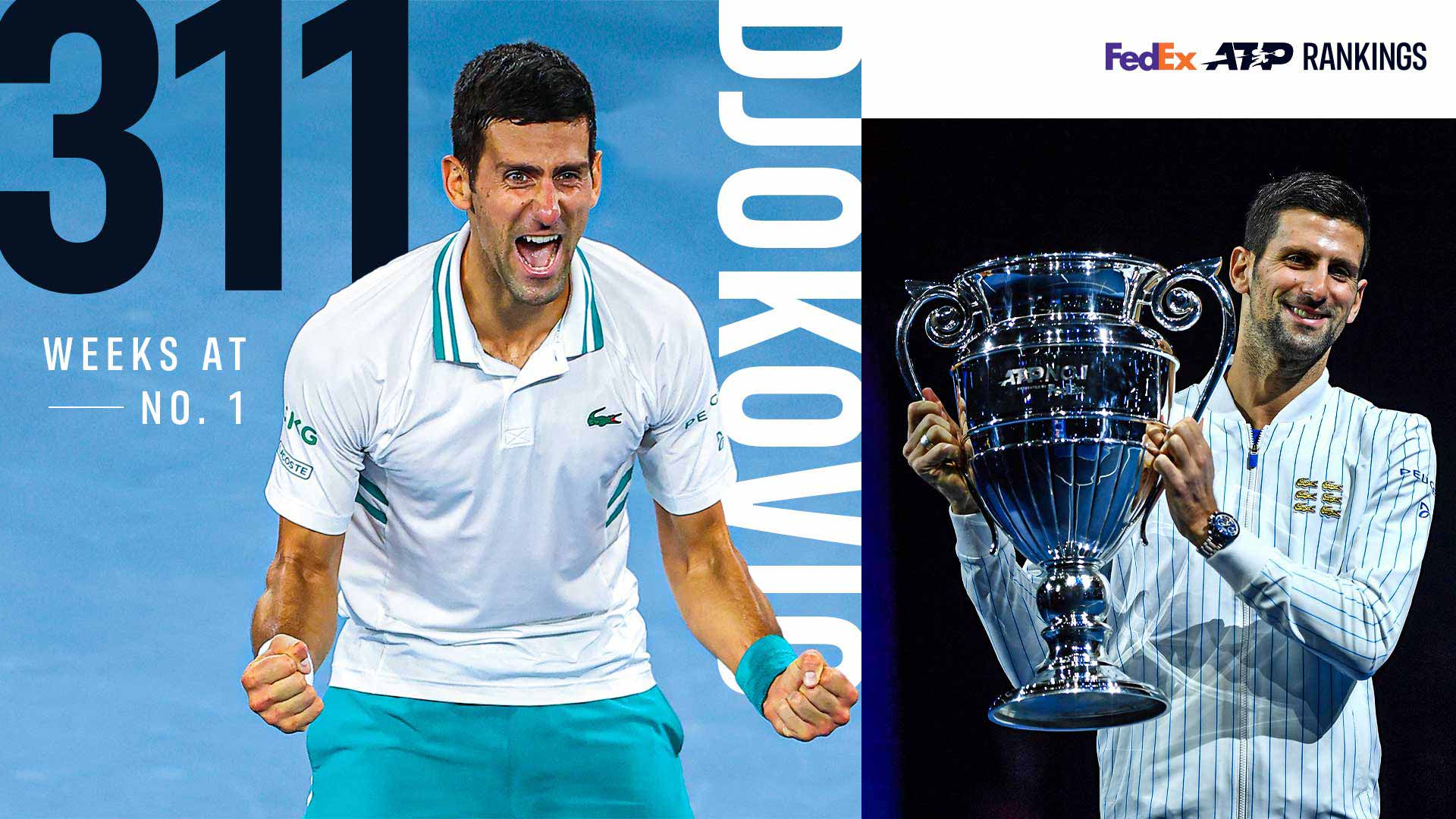
The Sultan of Serbia was back on course, and in 2019, he blew past Connors and Lendl. In 2020, he defended his throne, going 41-5 in the strangest and most mentally challenging season in tennis history, racing past his boyhood hero, Pete Sampras, along the way. He spoke to the American legend about the difficulties of staying on top at the Nitto ATP Finals in London, expressing wonderment at how Sampras managed to finish as the year-end No. 1 six years in a row.
“Staying No. 1, ending the seasons as No. 1, as Pete said, is a paramount achievement and the amount of dedication that you need to undergo in your life and the way you have to organise yourself, not just on the court, but off the court, is tremendous,” he said.
As he coped with that stress over the years, there has always been one big fish — an elusive white whale named Roger Federer — to pursue. The Serb has been stalking Federer for his entire career. Roger first rose to No. 1 at 22, Novak at 24. Novak hit 100 weeks on top at 26, Federer at 24. Federer hit 300 weeks at 31, Novak at 33.
Though he could very well win more majors than any player in history, Djokovic has been swimming in the wake of Federer and Nadal for years. Those legends have legions of passionate fans, who naturally have rooted against the upstart Serb, whose emergence dented the prospects of their heroes.
Slaying fellow fan favourites empowers Djokovic, who defiantly raises his chin and his game when needed. He was underestimated for much of his early career, which makes his achievements even sweeter. And so, when he passed Roger Federer this week for most weeks at No. 1, it’s really a culmination of a lifetime of work, sacrifice and devotion to his craft. The record clearly means the world to him.
“In our sport, winning [the] most Grand Slams and being No. 1 for as long as possible are [the] two biggest goals,” Djokovic said after passing Sampras last year.
No one has had to work harder to get to the top than Djokovic. Early in his career he didn’t get lots of free points on his serve, and he rarely blasts an opponent off the court with 90 mph forehands. He has an all-around game propelled by world-class fitness and movement, but his greatest strength has always been mental. His uncanny ability to focus and stay cool on the big points, and to go into ‘lockdown mode’ during tie-breaks, has made him the player he is.
Remarkably, Djokovic has stayed on top for so long during tennis’ golden era, battling and often overcoming two of the greatest legends in the sport, and a host of other future hall of famers, like Andy Murray, Juan Martin del Potro, Stan Wawrinka, Dominic Thiem and others. He has a winning career mark against all those players, not to mention Federer and Nadal, too.
“It really excites me to walk the path of legends and giants of this sport.”
Along the way, he’s inspired an incredible tennis boom in Serbia and around the Balkans. There are now seven juniors from the former Yugoslav republics (four of them from Serbia) ranked inside the Top 100 of the ITF World Tennis Tour Junior Rankings.
Coming into the 2021 season, a number of prognosticators thought that challengers like Thiem and Daniil Medvedev may wrestle the No. 1 ranking away from Djokovic this year. The Serb responded by winning his ninth Australian Open title, dismissing Medvedev in straight sets in the final.
If Djokovic hears the chorus of naysayers writing premature tennis obits for him, look out. At 33, he’s still in tremendous shape. And his dedication to fitness, nutrition, and yoga will likely leave him ready to compete at the highest level for years to come. He’s six years younger than Federer and the prospect of him following the Swiss’s example and playing for several more years should concern any other player with designs on the No. 1 perch he considers his throne.
But will he remain hungry enough to push well past 311 weeks on top? Why not? There are still records to be broken. He’s now within two majors of Federer and Nadal in the all-time Grand Slam titles chase, and he still needs 28 more tour-level titles to eclipse Jimmy Connors’ all-time mark of 109, though Federer and Nadal aren’t done winning either. Ultimately, his assault on the sport’s record books rests on endurance, a quality he has demonstrated in spades for years.
In any case, even if he never wins another match, Djokovic’s story is one that’s been great for the sport. During his early years on tour, his fitness level wasn’t what it is today, and he had to retire from a number of matches. At one point, he opined that perhaps he was born at the wrong time and implied that he might never supplant Federer and Nadal.
But he evolved into the toughest, most unflappable competitor in the sport. The fact that he could emerge from a war-torn country with little tennis infrastructure, from a family of modest means with no deep ties in the sport, illustrates that tennis’ next great champion could come from any corner of the world. Gencic spotted the potential in him at an early age but nevertheless, Djokovic wasn’t born a champion. He fought to get to the top, bettering himself at each hurdle, and battled harder to stay there than anyone ever has before.
“It really excites me to walk the path of legends and giants of this sport,” said Djokovic. “To know that I earned my place among them by following my childhood dream is a beautiful confirmation that when you do things out of love and passion, everything is possible.”
